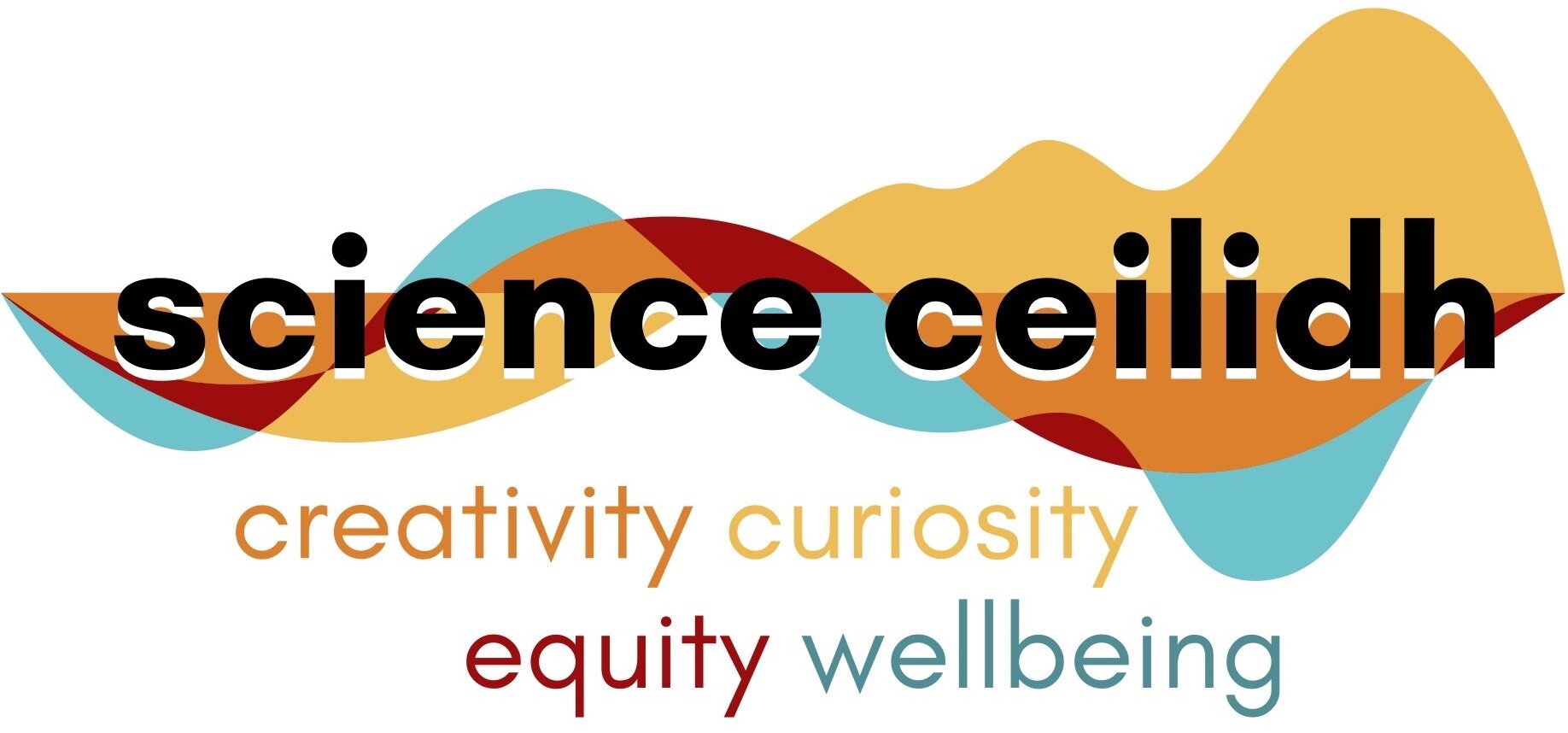This is still a resource in progress (v3.0) and your feedback is most welcome!
supporting stem learning with arts & movement - Primary teachers pack
This resource has developed from many years of our work as the Science Ceilidh using movement and other arts to help support STEM (Science, Technology, Engineering & Maths) learning in primary and secondary schools across Scotland and the UK.
Our schools programme primarily focuses on exploring the science of music and linking this to physics, biology and neuroscience topics. This includes how vibrations of the instruments make sounds, how this is detected by our senses & our brains and how this links to current research about brain plasticity and the importance of learning. Our team have a strong background in both science and traditional music and dance, so we can incorporate music and movement games, including an activity where students break down one of the senses discussed into steps, and create and then perform a dance to explain how the ears or the eyes for example work to their classmates and parents.
Based on this experience and the feedback of both the pupils, parents and teachers themselves, we have found creative movement has multiple benefits in STEM learning including:
1. Reinforcing students' conceptual understanding by asking students to break down science concepts they have learnt into key steps & revising them.
2. Developing students' creative skills, teamwork and higher order thinking through working as a group to interpreting the science concepts through movement or other ways.
3. Encouraging students to take ownership of their work and the science involved as "the experts" when they perform the developed piece with the science explanations to peers, schoolmates or even parents/wider community.
4. Breaking stereotypes about science ("science isn't creative") and reciprocally about the arts, both as topics and as careers, by integrating arts and dance in STEM as part of a larger conversation about the importance of creativity.
5. Engaging learners through physical activity and embodied learning in classes, varying the learning approach styles with arts & dance, and supporting interdisciplinary links across curriculums, and between students & departments.
We are keen in the long-term to be able to research the benefits more robustly. However, as the integration of movement does not require specialist skills nor even need to take too much time. Therefore, we encourage education practitioners to experiment themselves and have designed this resource, with the kind support from the Wellcome Trust, to give advice and suggestions of lesson plans, activities and ideas of how you may tackle topic such as circuits,the water cycle, the ear or the solar system with arts and movement.


